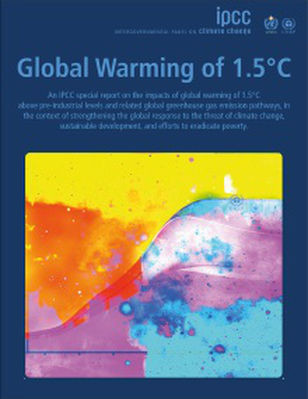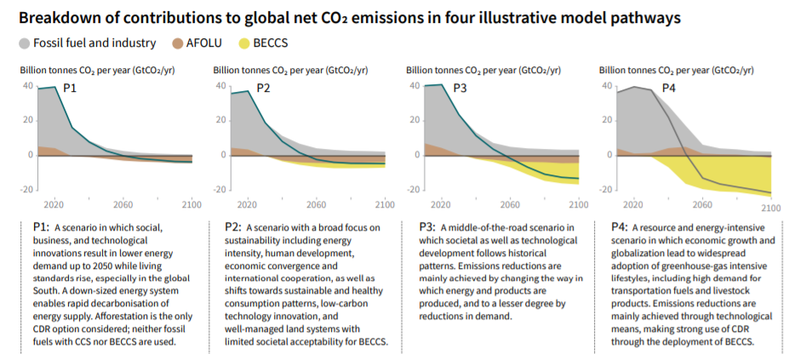Final warning: Why half a degree means a world of difference

After a gruelling three years of research, review and negotiation, the Intergovernmental Panel on Climate Change (IPCC) has finally issued its special report on the impact of 1.5°C global warming above pre-industrial levels. For those tracking global efforts to curb GHG emissions this is a watershed moment and a severe reminder of the pace at which our climate is changing. It concludes that there is simply no more time for delays in drastically cutting global carbon emissions if we wish to avoid the worst impacts of climate change.
Next month it will be two years since the Paris Agreement came into force, a historic moment in building multi-lateral support for change. The IPCC’s 33-page Summary for Policymakers makes for an essential but tough appraisal of our progress.
Simply put, the report highlights our collective and continued failure. Pathways reflecting the level of ambition of current INDCs (Intended Nationally Determined Contributions) to 2030 will not limit global warming to 1.5°C, the IPCC says, “…even if supplemented by very challenging increases in the scale and ambition of emissions reductions…” after that year. We are currently on track for global warming of about 3°C by 2100, and continuing afterwards.
The predicted consequences of continuing along this path are sobering. The Max Planck Institute predicts under certain climate scenarios that North Africa may become uninhabitable by the mid-century with a rise in extreme temperature days from 15 days to 80 days in a given year. This will not only mean huge climactic events but also major social changes, including mass migration and conflict over resources such as fresh water. David Carlson of the World Meteorological Organisation already says “we are now in truly unchartered territory”.
In this report the IPCC stress that climate models project ‘robust’ differences in climate characteristics between 1.5°C and 2°C. This half a degree difference will mean hotter extreme temperatures in most inhabited regions, heavier precipitation and greater probability of drought and arid regions. Limiting global warming to 1.5°C would approximately halve the fraction of world population expected to suffer water scarcity as compared to 2°C. The impacts will not just be environmental and social, but economic too – the risk to global economic growth due to climate change impacts is projected to be lower at 1.5°C than at 2°C by 2100. Investments of £1.8 trillion – around 3% of global GDP - will be required every year until 2035 to cap warming at 1.5°C. This is far exceeded by the cost of doing nothing. The National Oceanographic Centre in Southampton estimates that sea level rise caused by global warming beyond 1.5C could cost £10.7tn per year by 2100 (1).
While the difference in impacts between a 2°C and 1.5°C scenario are not quite as drastic as, say, between 2°C and 3°C, the key point is that aiming for 1.5°C gives sufficient contingency for underperformance. A 2°C target is highly risky if it still leaves open the possibility for greater levels of warming.
Heeding the call
The remedy for this impending disaster is simple: rapid and deep cuts in carbon emissions from four key global systems: energy, land use, cities and industry – starting now. The IPCC outline five main goals:
- Global net zero emissions by 2050;
- Global emissions of CO2 falling by 45% from 2010 levels by 2030;
- Coal to comprise just 0-2% of global energy supply by 2050;
- Renewables to provide up to 85% of global electricity by 2050;
- An area of land almost twice the size of India dedicated for energy crops.
The IPCC choose four illustrative scenarios to 2100 (see Fig. 1). These scenarios acknowledge the challenge of achieving the 1.5°C goal if societal and technological changes follow historical patterns, with a growing middle class in countries such as India, Pakistan, China and Brazil adopting lifestyles as carbon-intensive as developed countries. Two of the scenarios rely on levels of carbon capture and storage at a phenomenal scale. The other two rely on major shifts in levels of production and consumption and huge levels of technological innovation in our use of energy. Common to scenarios P1, P2 and P3 is the rapid pace of decarbonisation required from 2020 - an almost ‘cliff-edge’ drop potentially requiring a ‘Paris Agreement 2.0’ at an extraordinary new level of ambition (2).

Figure 1: Breakdown of contributions to global net CO2 emissions in four illustrative model pathways (Source:IPCC).
Climate change to bite in the financial world
If policymakers heed the IPCC’s warnings and pursue decarbonisation at this scale, strong incentives will be required to keep the overwhelming majority of fossil fuels in the ground. The report estimates that government around the world will need to impose effective carbon prices of at least $135 – and up to $5,500 – by 2030, to cap warming at 1.5°C (3). Carbon Tracker recently highlighted the scale of the ‘carbon bubble’ as the financial risks of potentially ‘stranded assets’ have been spread throughout the economy (4). The fossil fuel industry alone has $25 trillion invested in infrastructure that is under threat from a major drop in demand. This poses dangers to entire national economies which are structured around fossil fuel production and consumption, such as Venezuela, Saudi Arabia and Qatar.
The way forward
At Verco we strongly support the scale and urgency of the emissions cuts recommended by the IPCC. In our recent ‘Climate Coin Toss’ video we advocated for businesses to push beyond the 2°C scenario used as the basis for the science-based targets movement. We are aware that the SBTI are looking at the implications of the IPCC report, and expect to publish revised guidance in early 2019 (5).
We believe that businesses should be aiming to better the target of eliminating carbon emissions completely by 2050. We are actively working with our corporate clients to explore pathways to net zero, and contributing to the ongoing conversation to define ‘net zero’ in key industries including real estate (6) - an area which is developing rapidly (7). With respect to the ‘carbon bubble’ and climate risks, complying with the recommendations of the Taskforce for Climate-related Financial Disclosures should be prioritised. The risk and scenario analysis techniques recommended by the TCFD provide a helpful and consistent framework for assessing exposure to climate impacts, both physical and transitional.
If Verco can help you in assessing the climate risks and opportunities facing your business, or to develop pathways to net zero carbon, please contact Paul Stepan, Head of Policy, Strategy and Compliance
(1) https://www.dailymail.co.uk/sciencetech/article-6250839/UN-study-says-eating-meat-throwing-gas-boiler-stop-Earth-overheating.html
(2) AFOLU refers to Agriculture, Forestry and Other Land Use. BECCS refers to Bioenergy with Carbon Capture and Storage. CCS refers to Carbon Capture and Storage. CDR refers to Carbon Dioxide Removal.
(3) https://www.nytimes.com/2018/10/08/climate/carbon-tax-united-nations-report-nordhaus.html
(4) https://www.businessgreen.com/bg/news/3062471/from-petrostates-to-ports-report-uncovers-carbon-bubble-risks-that-will-hit-as-fossil-fuel-demand-peaks
(5) https://sciencebasedtargets.org/2018/10/08/the-ipcc-1-5c-report-and-what-it-means-for-science-based-targets/
(6) https://www.vercoglobal.com/single-post/2018/03/20/Deep-renovations-with-ALDREN-aim-to-increase-the-value-of-commercial-buildings-across-the-EU
(7) https://www.edie.net/news/6/Embodied-carbon--Should--net-zero--buildings-require-carbon-neutral-construction-/